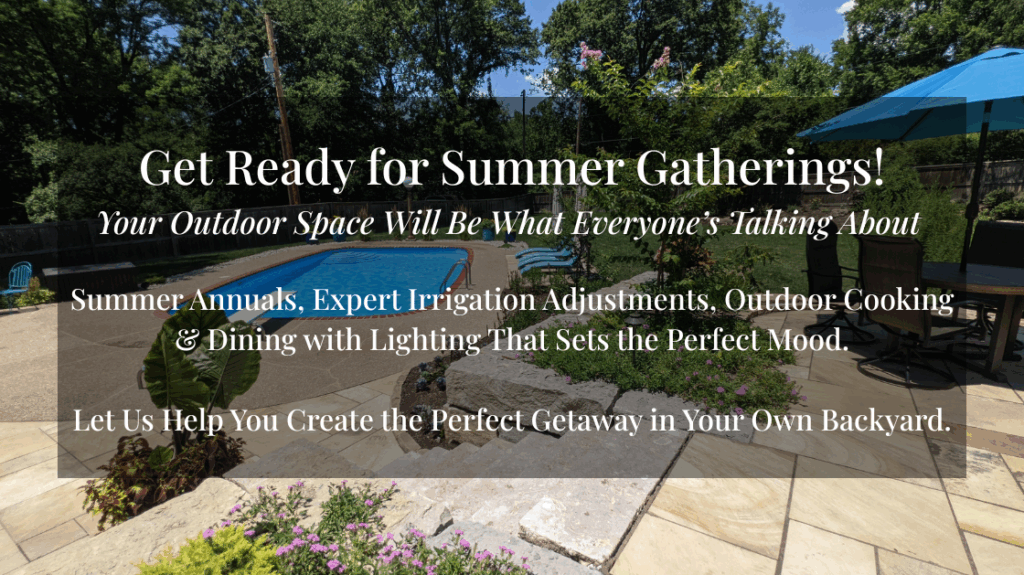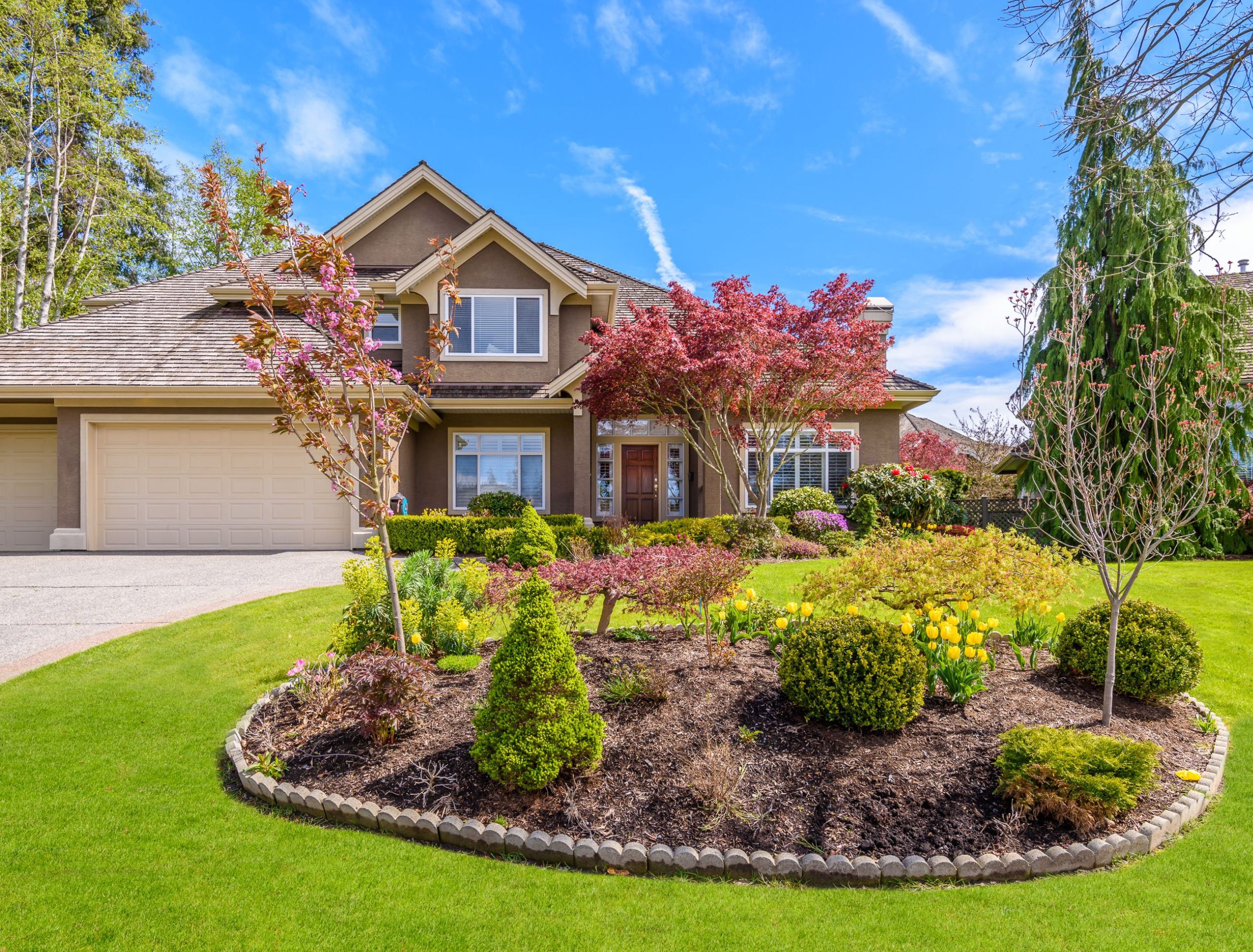Outdoor Lighting Installer vs. Landscape Lighting Installer: What’s the Difference?
Wiki Article
Checking Out Different Types of Landscape Design to Enhance Your Outdoor Environment
Landscape design plays an important role in defining exterior areas. Different styles, from standard gardens to modern minimal designs, supply unique benefits for enhancing appearances and feature. Including components like xeriscaping and native plants can add to eco-friendly equilibrium. Recognizing the interaction of hardscape and softscape is essential for creating inviting atmospheres. The selections offered can be overwhelming, motivating one to review which design ideal lines up with their vision for an outdoor haven.Standard Yard Landscape Design

While several contemporary gardens accept minimalism and native plantings, conventional garden landscaping stays a treasured method that emphasizes balance, structure, and decorative functions. This design usually integrates official geometric formats, where hedges, flowerbeds, and pathways are organized with accuracy. Central focal factors, such as fountains or sculptures, draw the eye and supply a feeling of harmony.Traditional landscaping frequently consists of a variety of plant kinds, showcasing seasonal flowers and evergreen components. Traditional shrubs, perennials, and annuals create lively colors and structures throughout the year. Furthermore, trellises, pergolas, and arches add upright interest and serve as assistance for climbing up plants, improving the total aesthetic.The use natural products, such as rock and wood, additional enhances the standard landscape, adding to a timeless high quality. Eventually, this style welcomes leisure and pleasure, making it a beloved option for those looking for a picturesque outside environment.
Modern Minimalist Landscaping
Modern minimal landscape design highlights simplicity and capability, characterized by open areas and tidy lines. Secret characteristics include a limited plant scheme and thoughtful hardscape design that focuses on use and visual allure. Effective plant choice approaches better boost the minimal method, creating peaceful outside environments that encourage relaxation and contemplation.Trick Characteristics of Minimalism
An expanding fad in landscaping is the embrace of minimalism, characterized by simpleness and functionality. Minimal landscaping concentrates on tidy lines, open areas, and a restricted color combination, advertising a sense of harmony. Aspects are very carefully curated to avoid clutter, allowing each component to stand apart. The use of all-natural materials, such as stone and wood, enhances the natural feeling while preserving a visual balance. In addition, minimalist layouts commonly include geometric shapes, which can develop visual interest without overwhelming the detects. Water functions might be consisted of, working as focal points that boost serenity. On the whole, minimalism in landscape design emphasizes the appeal of restriction, permitting nature's fundamental high qualities to beam through in an unified outside environment.Plant Selection Techniques
Effective plant choice is necessary for achieving the wanted visual in modern-day minimalist landscaping. The emphasis ought to get on simpleness, using a minimal scheme of plants that enhance each other and the surrounding environment. Indigenous plants are commonly excellent, as they require less upkeep and water, promoting sustainability. Picking types with differing elevations and structures can include aesthetic rate of interest without frustrating the space. Grouping plants in clusters as opposed to spreading them enhances communication and enhances the minimal theme. Evergreen varieties can offer year-round framework, while seasonal blossoms introduce subtle shade modifications. Inevitably, the objective is to develop a tranquil outdoor area that symbolizes serenity and harmony via thoughtful plant options.Hardscape Design Principles
Crucial aspects in hardscape design significantly contribute to the total aesthetic appeals and functionality of minimalist landscape design. This style technique highlights clean lines and underrated products, developing a minimalist visual experience. Trick components include pathways, outdoor patios, and maintaining wall surfaces, which not just define rooms but additionally enhance ease of access and usability. The use of materials such as concrete, rock, and wood prevails, mirroring a natural yet modern aesthetic. Integrating in proportion layouts and geometric shapes further reinforces the minimal viewpoint, enabling an unified blend with surrounding greenery. Additionally, appropriate drainage and erosion control are vital considerations, guaranteeing longevity and sustainability. Inevitably, effective hardscape style works as a foundation that complements softscape components while preserving balance and simplicity in outdoor settings.
Cottage-Style Landscaping
Cottage-style landscaping uses a delightful method to creating welcoming outdoor spaces. By integrating charming plant combinations, this design cultivates a feeling of warmth and fancifulness. The emphasis on comfortable, well-defined locations motivates leisure and satisfaction of nature.Lovely Plant Mixes
Lots of homeowners look for to produce an attractive exterior area, achieving the beauty of cottage-style landscape design commonly pivots on thoughtful plant combinations. Dynamic blooms, lush vegetation, and fragrant herbs can be artfully combined to evoke a sense of fancifulness and fond memories. For example, integrating lavender, daisies, and foxgloves develops a colorful tapestry that draws in pollinators while supplying a delightful scent. Integrating ornamental lawns like miscanthus can add texture and movement, matching the softer flowers. Additionally, mixing annual and perennial plants guarantees continuous color throughout the periods. Making use of mountain climbers, such as clematis or honeysuckle, can improve upright rate of interest. Overall, these combinations not only enhance the landscape but also promote a welcoming and captivating ambience.
Comfortable Outdoor Rooms
Producing comfortable outside areas calls for a careful mix of comfort and appeal, complementing the lively plant combinations located in cottage-style landscaping - Retaining Wall Installation. These locations usually feature inviting seating arrangements, such as weathered wood benches or supported chairs bordered by lush plant. Soft lighting, like fairy lights or lanterns, includes heat, changing the space right into a peaceful resort. Including elements such as trellises embellished with climbing up roses or aromatic herbs improves sensory experiences. In addition, paths made of rustic stones welcome expedition and link with nature. Ornamental touches like birdbaths or whimsical garden art contribute to a sense of fancifulness. Eventually, the goal is to create an enchanting environment that urges leisure and pleasure of the beauty surrounding these comfy exterior havensXeriscaping for Water Conservation
Exactly how can areas balance aesthetic landscaping with the pressing demand for water preservation? Xeriscaping becomes a sensible remedy, promoting lasting practices that decrease water use while improving outdoor elegance. This landscape design technique concentrates on using drought-resistant plants belonging to the area, which call for substantially less water than conventional gardens. By including mulch and efficient watering systems, xeriscaping decreases dissipation and runoff, additional saving valuable water resources.Communities can produce aesthetically attractive landscapes via mindful preparation, picking a varied selection of textures and colors that grow in dry conditions. Additionally, xeriscaping encourages using decorative rocks and attractive crushed rock, providing useful and eye-catching alternatives to yard lawns. As areas welcome this environmentally friendly strategy, they not only decrease their water intake however additionally advertise biodiversity and strength in their regional ecosystems. Inevitably, xeriscaping works as a demonstration of the harmony in between visual charm and environmental duty.Hardscape Style Elements
Hardscape style components play an essential function in enhancing outside spaces by providing structure and capability. These non-plant functions, such as patio areas, wall surfaces, decks, and pathways, develop aesthetic rate of interest while serving sensible objectives. Using products like stone, block, and concrete, hardscaping contributes to the general aesthetic charm and toughness of a landscape.Incorporating hardscape aspects can define locations within a yard, leading motion and urging social interaction. For example, a well-placed path can link different sections of the garden, while retaining wall surfaces can manage altitude adjustments and prevent erosion.Furthermore, hardscape design can improve availability and security, giving stable surfaces for strolling or lounging. Effective combination of hardscape parts enhances soft landscape design, making sure a well balanced outside atmosphere. Ultimately, thoughtful hardscape layout boosts not only the elegance of outdoor rooms however likewise their use, making them extra welcoming and useful for property owners and site visitors alike.Outside Living Areas
While outside space offer a smooth mix of convenience and nature, they function as vital expansions of a home, improving way of life and recreation. These areas can include patio areas, decks, or exterior kitchens, created to promote relaxation and amusement. Outdoor Lighting Installer. By including functional furniture and fashionable decor, house owners produce welcoming ambiences for events or peaceful evenings.The integration of color frameworks, such as pergolas or awnings, protects against the aspects while keeping an open feel. Fire pits and outside heating systems extend use right into cooler months, offering heat and ambiance. Additionally, incorporating lighting features improves the room's usability after sunset, developing a wonderful evening atmosphere.Landscaping components, such as boundaries and pathways, even more define these areas, guiding movement and including aesthetic charm. Eventually, outdoor space change backyards into flexible resorts, promoting a way of living that welcomes both nature and comfortIndigenous Plant Landscape Design
Indigenous plant landscaping stresses making use of indigenous flora to develop harmonious and lasting outside environments. This approach not just enhances biodiversity but likewise conserves water and minimizes the need for chemical plant foods and chemicals. By choosing plants that are belonging to a specific area, home owners can guarantee that their landscapes are well-adapted to neighborhood dirt and environment conditions, resulting in reduced maintenance requirements.Additionally, native plants provide essential environments for neighborhood wild animals, including butterflies, birds, and , promoting environmental health. Landscape designs that integrate these plants typically feature naturalistic formats that resemble local environments, cultivating a local color and connection to the environment.Furthermore, indigenous plant landscape design can add to soil security and disintegration control, making it an ecologically accountable choice. In general, this method not just improves outside spaces however likewise sustains the neighborhood ecosystem, developing a sustainable balance in between human activity and nature.
Often Asked Inquiries
Just How Can I Choose the Right Landscape Design Design for My Home?
Choosing the right landscaping design for a home includes examining the home's design, climate, and personal preferences. Bbq Island Installation. Grill Islands Investigating numerous styles and speaking with specialists can supply guidance to create an unified exterior room customized to specific requirementsWhat Is the Typical Price of Professional Landscaping Providers?
The average cost of specialist landscaping services generally varies from $1,000 to $5,000, depending on job size, intricacy, and area. Homeowners must think about acquiring several quotes to guarantee they receive reasonable prices and high quality solution.Just how Commonly Should I Preserve My Landscaped Lawn?
The frequency of keeping a designed backyard commonly relies on the features and plants existing. Generally, regular upkeep every few weeks is recommended, with seasonal tasks enhancing in regularity throughout top expanding seasons for suitable health and aesthetic appeals.Are There Landscaping Alternatives for Small Urban Spaces?

Numerous landscape design choices exist for tiny metropolitan spaces, consisting of upright gardens, container plants, and roof yards. Incorporating these aspects can make best use of restricted locations while offering plant, boosting aesthetics, and boosting air high quality in metropolitan settings.
What Plant kingdom Are Ideal for Attracting Local Wildlife?
The most effective plants for bring in local wildlife include indigenous flowering species, berry-producing bushes, and varied lawns. These plants give vital food and habitat, promoting a growing ecosystem that supports different birds, insects, and little mammals. Many homeowners look for to develop a picturesque exterior area, attaining the beauty of cottage-style landscape design frequently hinges on thoughtful plant mixes. Creating comfortable outdoor spaces needs a careful blend of convenience and charm, matching the lively plant mixes discovered in cottage-style landscape design. Native plant landscape design stresses the use of indigenous plants to create sustainable and unified outside settings. Landscape creates that include these plants commonly feature naturalistic layouts that mimic regional ecosystems, promoting a sense of area and link to the environment.Furthermore, indigenous plant landscaping can add to dirt stability and disintegration control, making it an ecologically liable selection. Numerous landscape design alternatives exist for little urban spaces, consisting of upright yards, container plants, and roof gardens.Report this wiki page